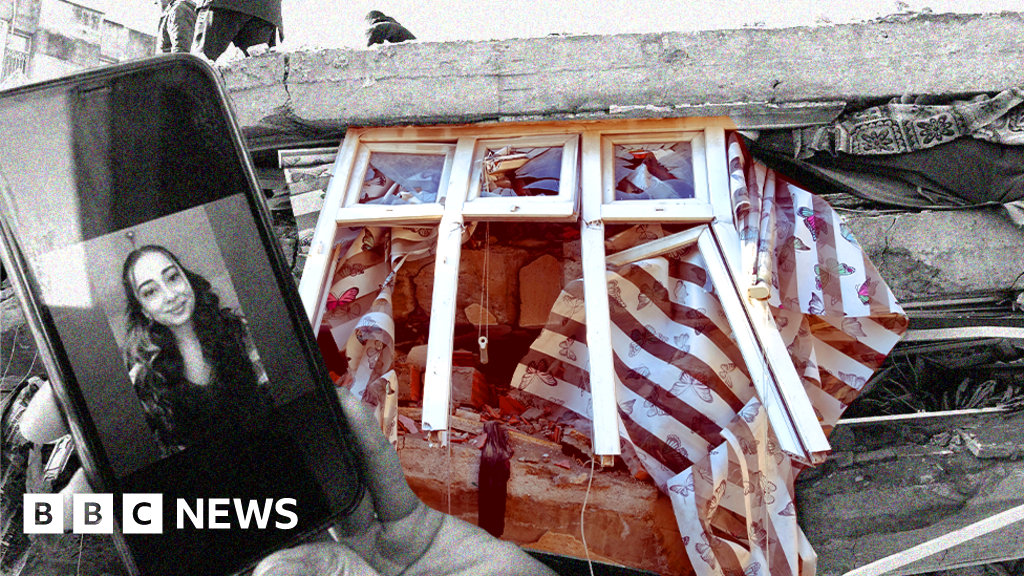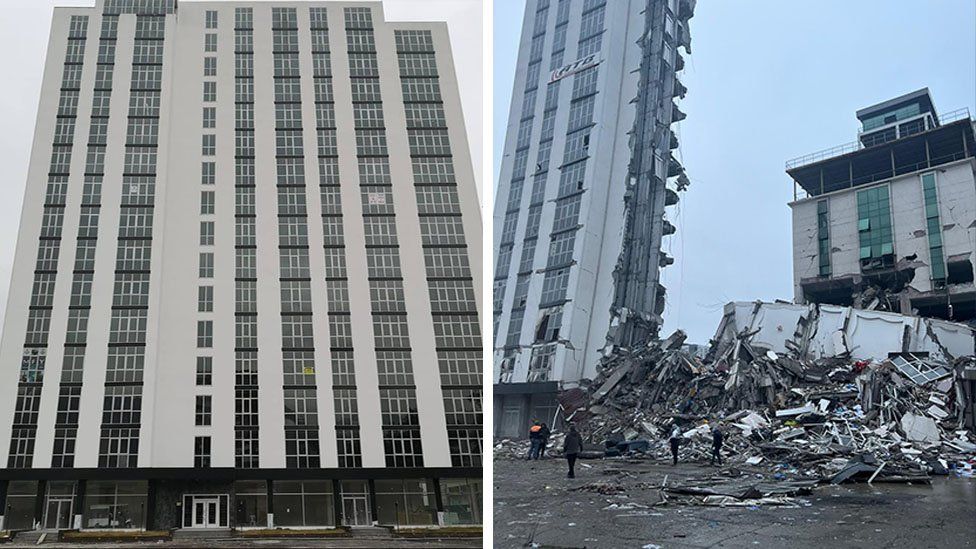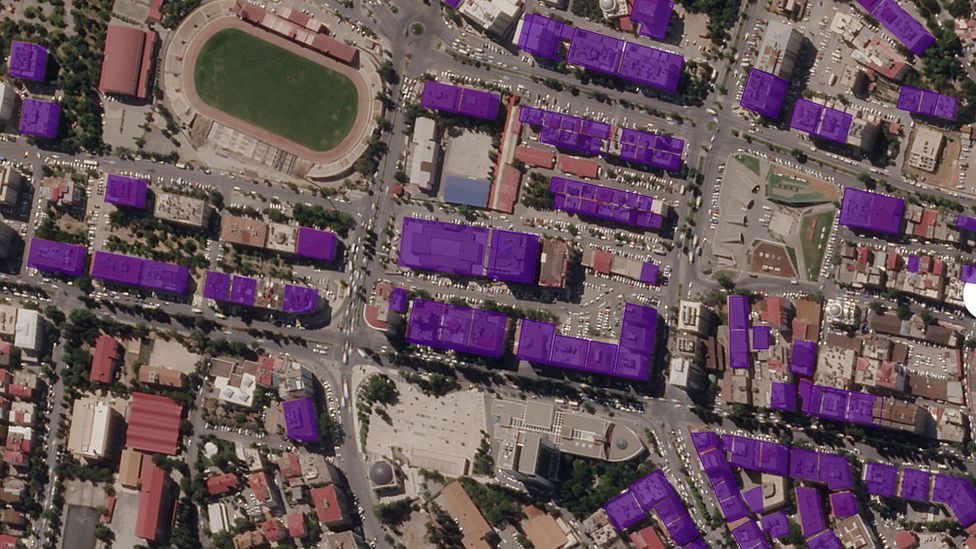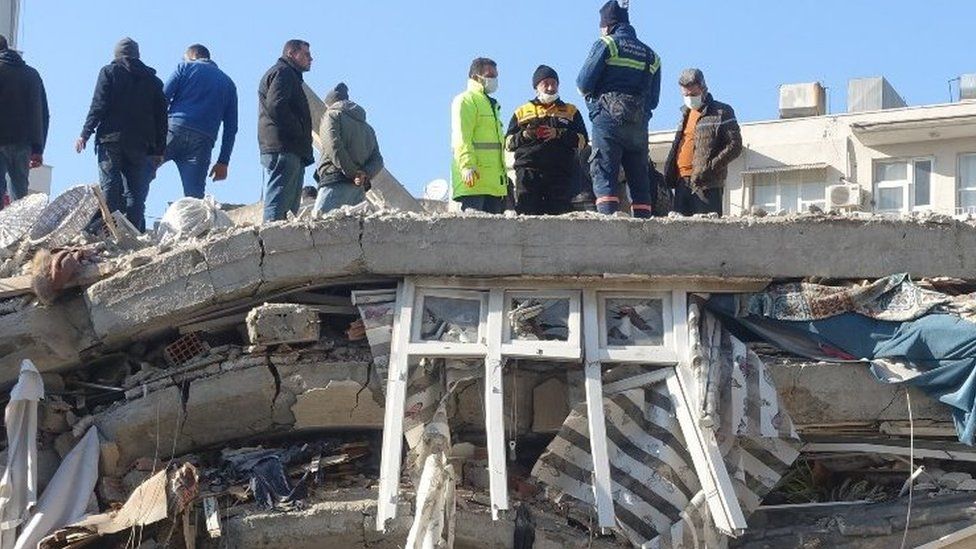
On an indistinct mound of rubble in southern Turkey is an uncannily well-preserved window frame with a butterfly print curtain that flutters in the cold wind.
“It’s Ceyda’s room.”
Before the earthquake, 19-year-old Ceyda Ocan looked through that window and those curtains, on to her street in the city of Iskenderun. Now her best friend Damla is on the street with her family to keep vigil at the fallen apartment block, hoping that Ceyda has survived, as rescue workers sift and dogs sniff for signs of life.
Damla met Ceyda in the neighbourhood when she was six and Ceyda eight, and they stayed close. They bought those curtains together on a recent shopping trip.
“We both love butterflies,” Damla says, weeping. On her phone is a picture of a birthday cake Ceyda organised for Damla with her sister, and in purple icing with butterfly decorations it says: “Who loves you the most in the world? Us of course!”
Ceyda’s apartment block, called Orcan, sat in a row of mid-rise pink and beige buildings with small balconies, in the centre of Iskenderun, all with shops on the ground floor. When the 7.8 magnitude earthquake struck at 04:17 on Monday, Ceyda would have been sleeping, along with the other residents of Orcan.
The block crumpled with the force of the tremor.
Many buildings in southern Turkey have been wiped out of existence this week, but this is the story of Orcan, home to Ceyda and her family alongside the residents of 14 other flats. In the days after the quake, their friends and family gathered round Orcan hoping for the best, and speaking of their loved ones.
We witnessed one brief moment of elation on Wednesday when a survivor was pulled from the rubble after more than a day of digging – one of Ceyda’s neighbours.
According to rescuers and residents in the area, she managed to say that she had spoken to Ceyda through the fallen walls, and that Ceyda had said she was OK. But officials warned that the survivor was disorientated – it might not have actually happened. By Friday, there was no more news.
We went back to Orcan for three days in a row to witness the informal rescue efforts, the people fleeing for safer places, and the field hospitals erected for survivors. Rescuers and neighbours all told us that they knew of three people who survived – the rest are unaccounted for.

Those gathered said Orcan was home to a tight-knit community, where neighbours would frequently visit each other’s homes for tea or strong Turkish coffee.
Residents of Orcan and other buildings on the street had WhatsApp groups and arranged regular meet-ups. “It was like, your place this week, yours next,” one local man said. “This is the Turkish way.”
When asked what the neighbourhood was like, Damla’s uncle Emrullah, who ran the local grocery shop, clasped his hands together. “Like this,” he said.
Orcan has stood for decades. “I’m 50 years old and I remember walking past it on my way to and from school,” one man said.
When the earthquake hit, locals told us the buildings on Orcan’s row fell “like dominoes”. On either side of the line of destruction, similar buildings appear unscathed and their residents spoke with both guilt and relief.
Cansu, a local paramedic, knew several of the people who lived in Orcan. After the earthquake hit, she left her home and ran round the corner to the entrance of Ceyda’s street, she said.
The buildings along that row are now crumpled together in a mass of debris. Only a few traces of the residents inside are visible: a kite decorated with characters from the Disney film Frozen; a torn Quran; a squashed white oven; a red-rimmed clock, frozen in time.
A man whose grandfather – a swimming enthusiast with a love for beer and stuffed peppers – lived in the building next door reached into the rubble beneath Ceyda’s curtains and pulled out a phone.
It was still working – and the background picture was his grandfather’s face. The man smiled a bittersweet smile.
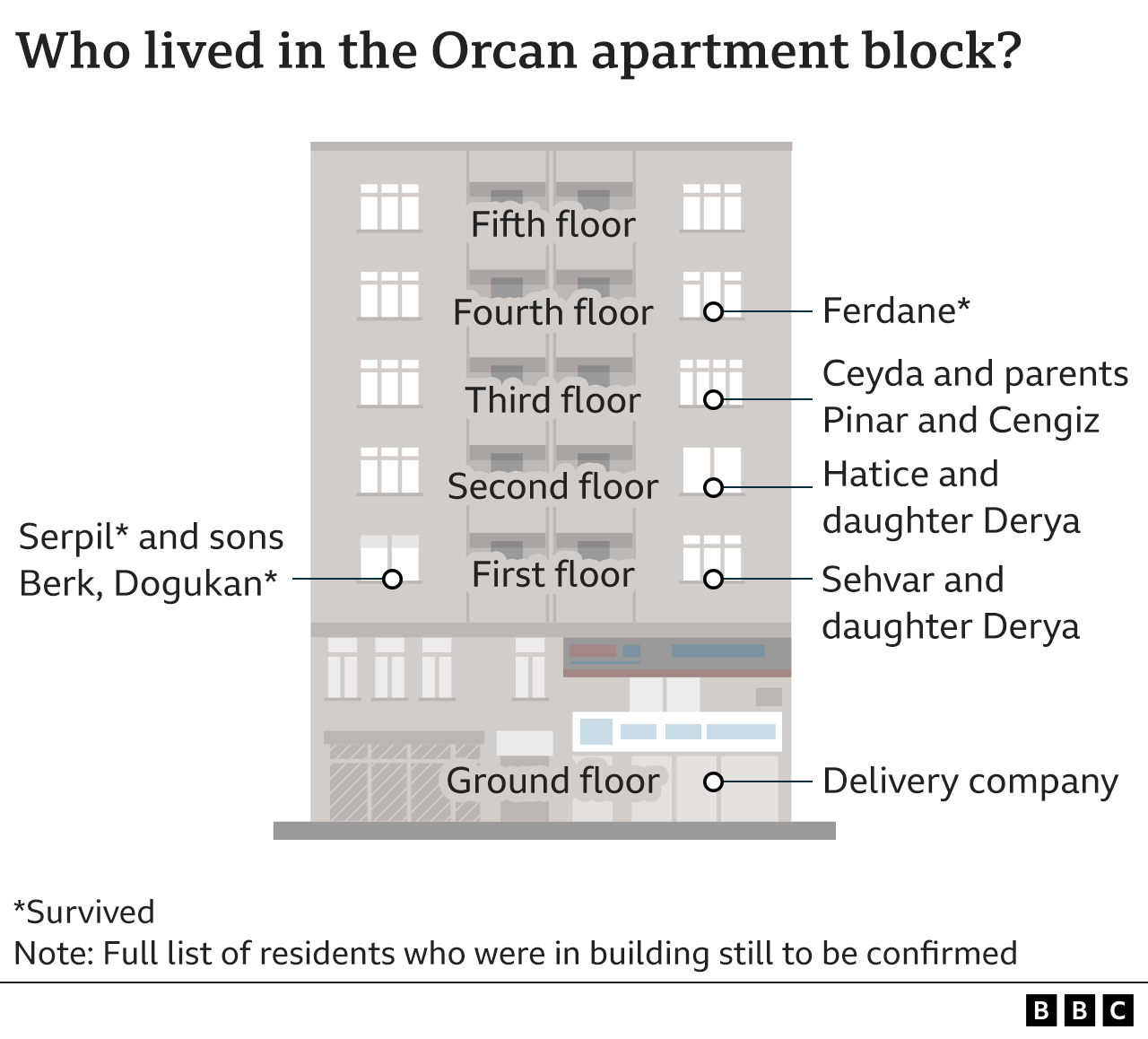
First floor: ‘She will not be able to answer’
A mother, 63-year-old Sehvar, and her non-verbal daughter Derya lived on the first floor of the apartment block.
Family members watching the rescue efforts said the pair spent most of their time together at home, Sehvar caring for her daughter.
“Even if she is alive and hears the sounds asking if anyone is out there, she will not be able to answer,” said Derya’s sister Deniz, who travelled from her home some two hours away to be at the wreckage.
On the same floor, on the other side of the building, lived university graduate Berk. One man said he was often seen around the neighbourhood drinking Coca-Cola, and joked that he must have drunk litres of it every day.
Many who talked about him said he was “intelligent”, “sociable” and “handsome”.
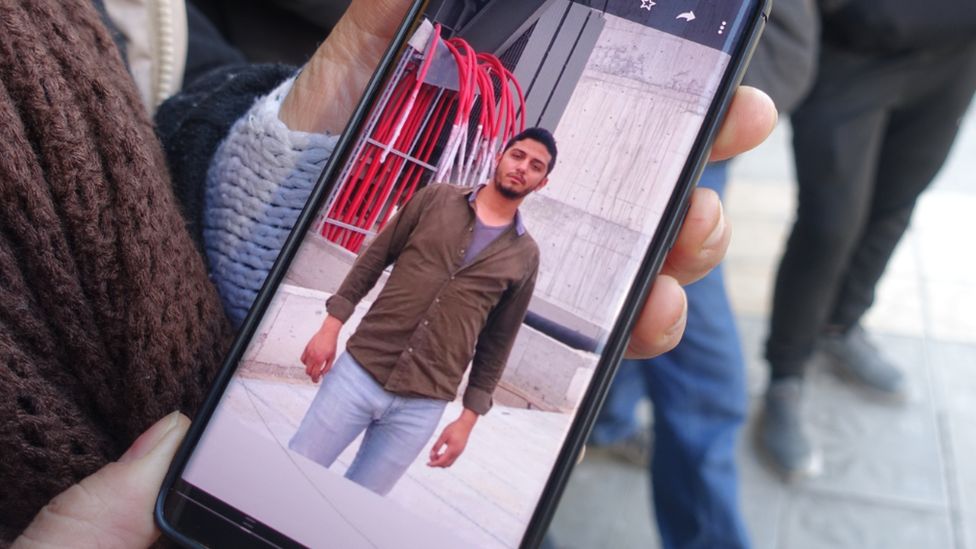
Berk’s brother Dogukan said he was trapped beneath rubble at the foot of the building with his mother after the earthquake, but was rescued in the immediate aftermath. He was critical of the official rescue effort, and said he had waited under the rubble for nine hours.
He said he did not want to talk about the experience more while his brother was still missing, but neighbours said he had been rescued after managing to call his other brother, who was not at home at the time of the earthquake, for help.
Berk has not been seen in days and his mother is now in hospital with injuries, apparently telling doctors: “I cannot feel my feet and my son is trapped inside”.
Second floor: ‘They couldn’t live without each other’
On the second floor lived another mother and daughter – 64-year-old Hatice and 33-year-old Derya.
One family member described the pair as being like Tom and Jerry.
“Whatever one did, the other did the opposite. But they couldn’t live without each other,” the relative said. “They are probably inches apart even now.”
Mevlut – Derya’s father and Hatice’s ex-husband – has waited each day for news of the pair.
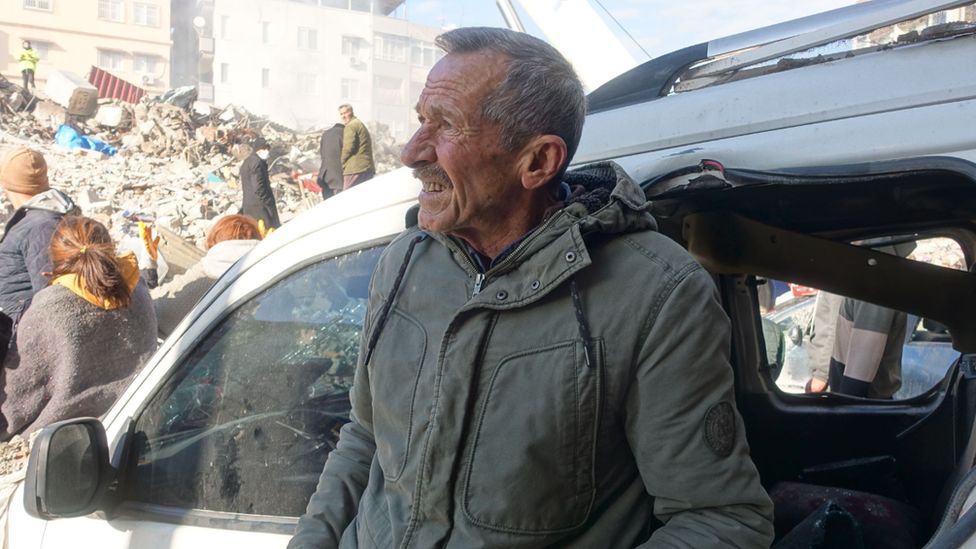
He described his daughter as being “beautiful” and “full of life”, cupping his hands around his face for emphasis.
In Derya’s job, he said, she was responsible for ensuring safe environments in the workplace.
That meant she would know “where to go, what to do, how to act” in an emergency.
He was staying positive and was full of faith in his daughter’s capabilities, holding out hope that she would “lead her mother and others to a safe place in the building”.
Third floor: ‘Ceyda will smile again’
Living with Ceyda on the third floor was her mother and father. Her older sister had moved away from home but was still nearby. Neighbours gathered told us that when her sister arrived at Orcan after the earthquake, she fainted and had to be carried away.
Her grandparents also lived around the corner. Their building, too, was destroyed by the earthquake.
Relatives describe them as a close family and the parents as the perfect couple.
Ceyda’s dad, Cengiz, owned a spare parts shop. Her mum had lost two of her sisters earlier in life, and family members say they worry how she will cope if she is pulled from the wreckage to learn that her parents are also now dead.
Ceyda’s popularity in the community is evident within minutes of arriving on the street. Friends faces light up when they recall memories of her, while both her current and ex-boyfriend join the search for her.
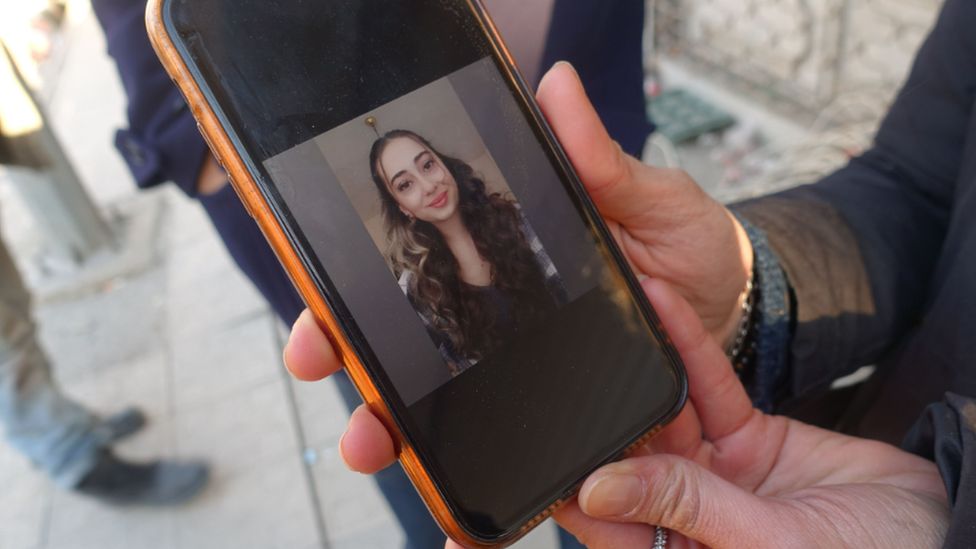
She was described as outgoing and thoughtful, and had been working hard to get into a university in Istanbul this year to study with Damla.
“Her favourite thing is going for coffee,” Damla says, adding that Ceyda would often take her friends out in her white Volkswagen car.
The car is now parked metres from the ruined apartment building, its windshield crushed. A red lighter can be seen inside.
On Friday, rescue workers called in through Ceyda’s window: “Is anyone alive there?” before heavy machinery broke into the room, pushing those butterfly curtains into the debris.
Damla says she is still determined that Ceyda will be found safe and “will smile again”.
Fourth floor: ‘How long have I been under?’
While we stayed near the building, learning about its residents from friends and family, one survivor was pulled out.
It was Ferdane, a single mother in her 50s who is well-liked in the community.
She was the survivor who said she had spoken to Ceyda.
Rescue workers said she was injured and distressed and had been taken to hospital, where her adult son was at her bedside.
When she was being taken away, she had asked how long she had been under rubble for, one worker said.
Her son replied: “Three days mama.” She thought it had been six.
By Friday, though, rescue workers had told the families still waiting at the site that they should not expect any more survivors.
If there were, it would be a miracle, they said.
Additional reporting by Emrah Bulut, Nihan Kalle and Tural Ahmedzade. Visual journalism by Dominic Bailey and photography by Hale Akhtay and Alice Cuddy.
Related Topics
-
-
14 hours ago
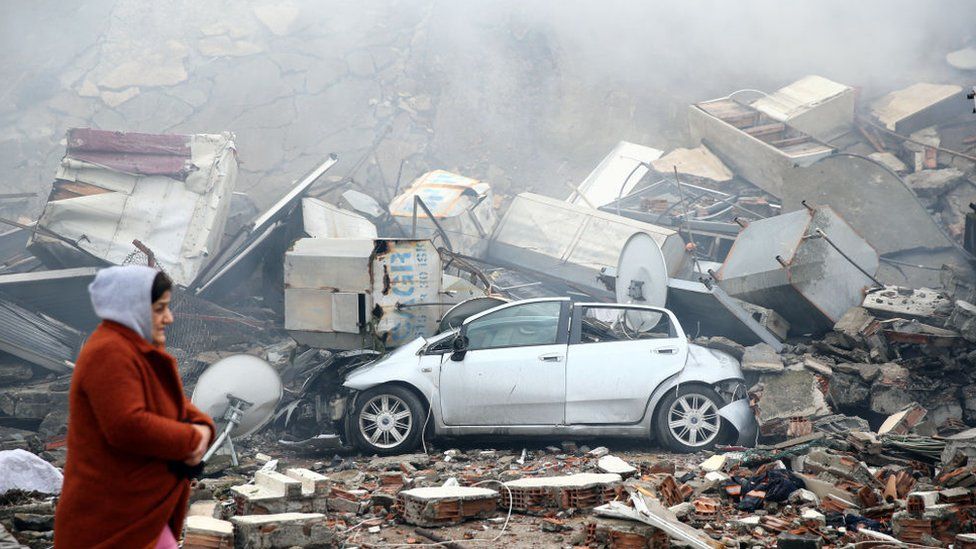
-
-
-
12 hours ago
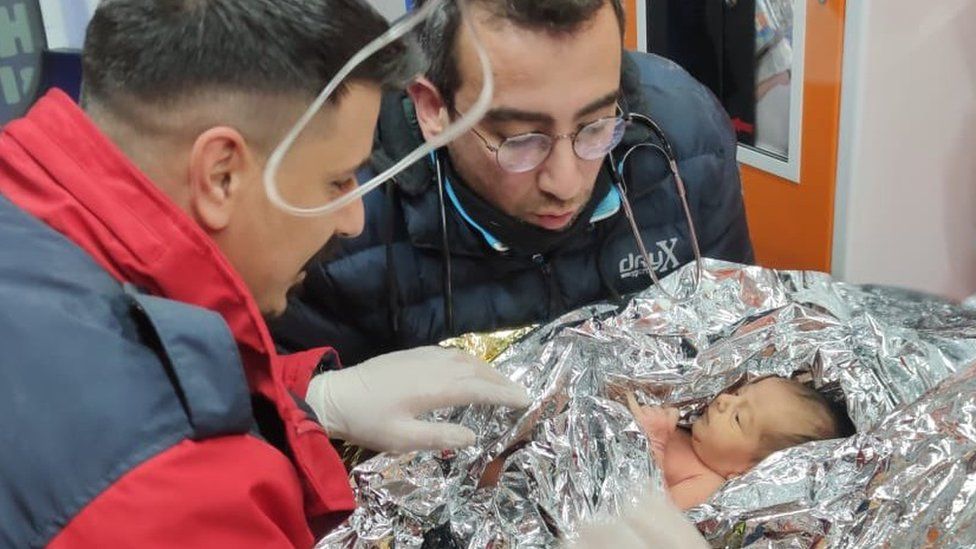
-
